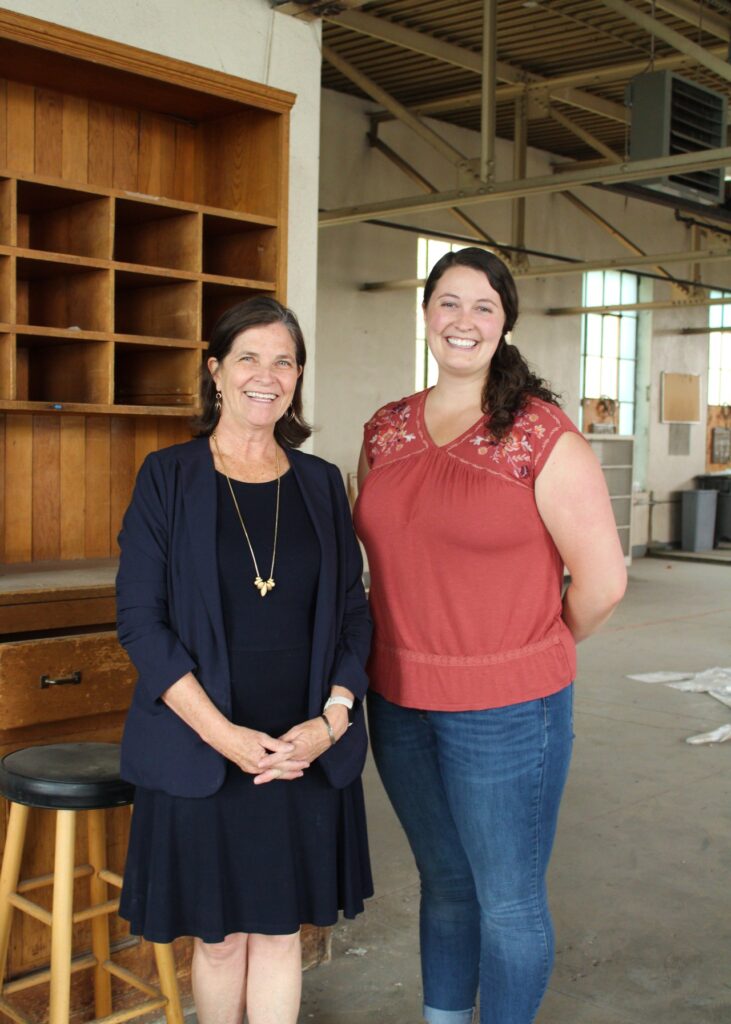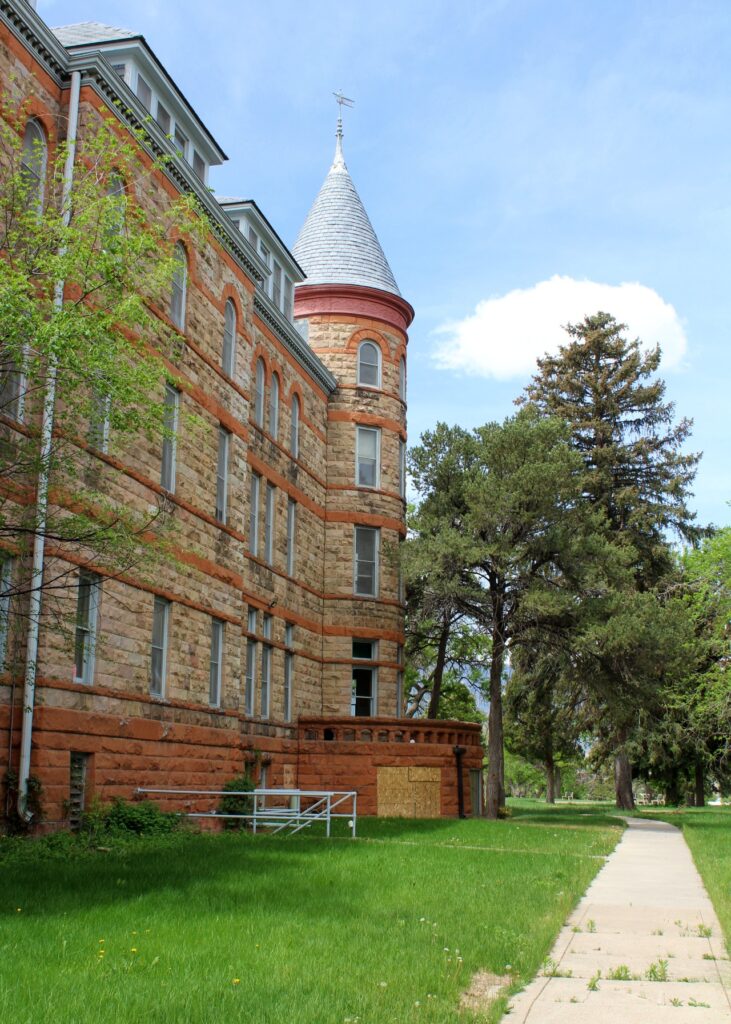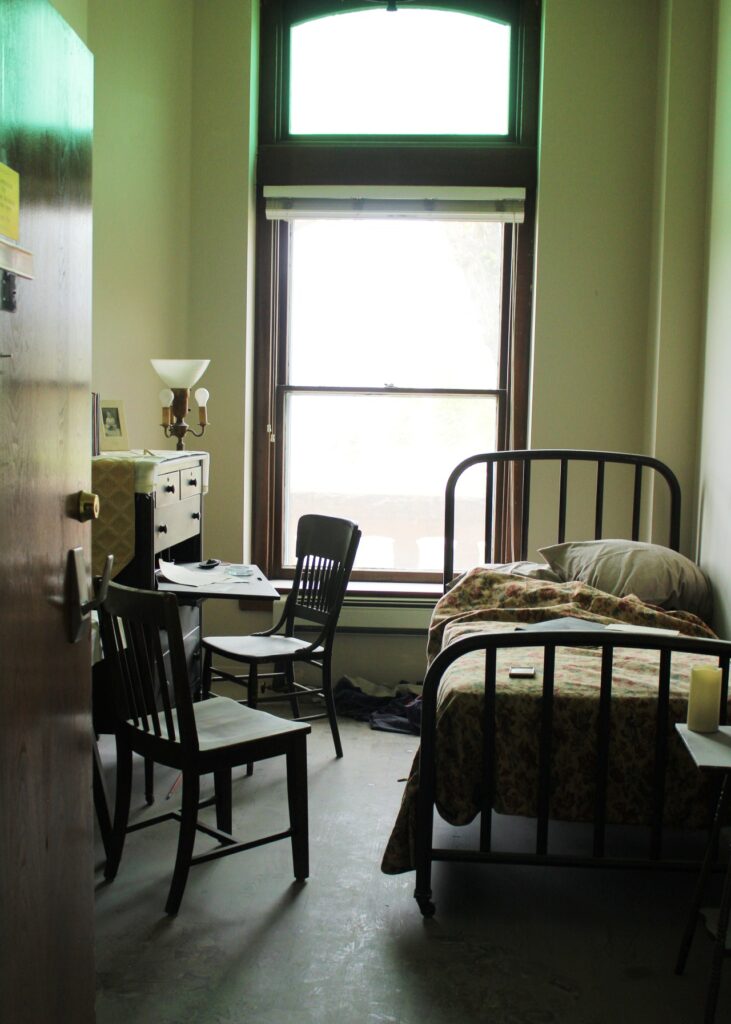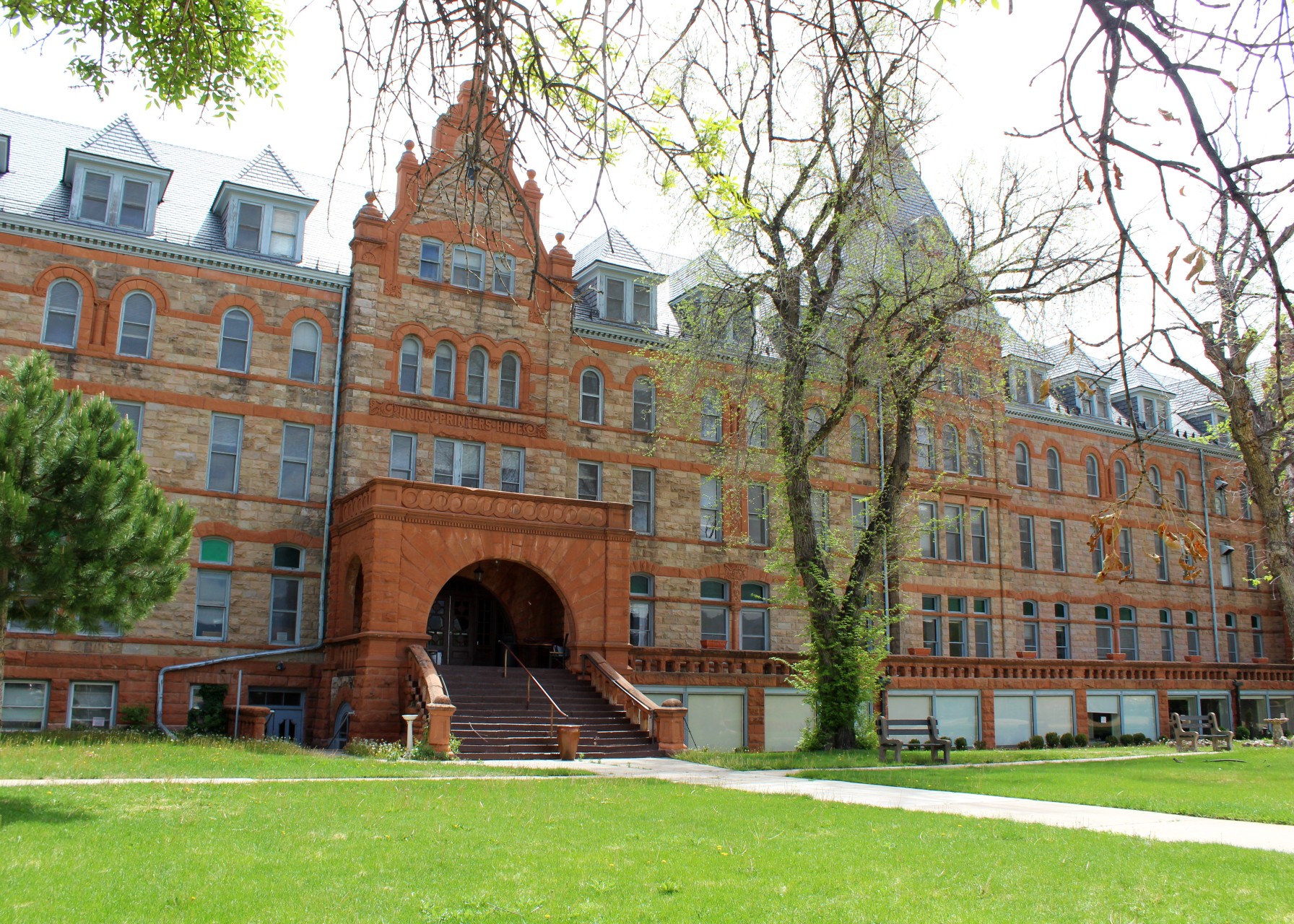
The Union Printers Home is a magnificent and stately property near downtown Colorado Springs. The site, just east of Memorial Park, has seen many changes over the years before permanently closing in 2020. The red and tan brick structure, built in 1892, sits back from the road, a mystery to those unfamiliar with its history.
Now, a group of local investors is hoping to write a new chapter for the 130-year-old site, while still preserving its past.
Susan Pattee is one of the locals who purchased the property to the tune of $18.5 million.
"We expect that the overall cost of the project over probably ten years is going to be in the hundreds of millions, probably upward of 500 to 600 million as we look at it going forward," Pattee said, standing in the lobby of the main Union Printers Home building.
She fondly refers to the main building as "the castle." It faces directly west, offering a panoramic view of Pikes Peak. Tall trees frame the mountain on either side.
Inside the sun-lit castle, a thin layer of white powder blankets the floors, the furniture, and the walls. It's the work of vandals who recently broke in and discharged fire extinguishers throughout the building. Footprints from visitors - human and animal alike - dot the terrazzo-tiled entryway, leading down the hallway and up the stairs.
Even with the mess, underneath this patina of age and destruction and continuous modification, Pattee sees potential. But before this building and the 26 surrounding acres can once again become a functioning destination, someone will have to go through the hundreds, if not thousands, of boxes and piles of records left behind, some dating back to the early 1900s.
Enter Ellie Hinkle, director of history and archives for the project.
"There was this one room in particular that had moldy clothing and old TVs and all sorts of weird stuff, but then sitting on the floor in the middle of the room was a birth certificate from 1912," she said. "There are all these little hidden treasures that you find kind of buried among the decay of buildings that haven't been used in a long time."
The group sent thousands of medical records they found in the buildings to a Utah-based company called Family Search. It will all be digitized and put into a database for people looking into their own family history. They're also working with the Colorado Springs Pioneers Museum to figure out what to do when all those documents are sent back.
In its prime, the Union Printers Home complex occupied 300 acres - from about Union Boulevard (its namesake) east to Circle Drive, and Pikes Peak Avenue on the north to Airport Road to the south. It served as a convalescent home for members of the International Typographical Union who had "black lung" from inhaling carbon-based ink used on the job, as well as tuberculosis.
"People in that union and in the printing business were really susceptible to a lot of lung issues because of the environments that they worked in," Hinkle said.
The castle has a large sun porch for fresh air, and at one point tuberculosis tents were set up nearby. All of the buildings were built solely by union labor.
"It became this sort of symbol of unions and of care for the fellow laborers," Hinkle said. "It was one of the top employers in El Paso County for a long time."
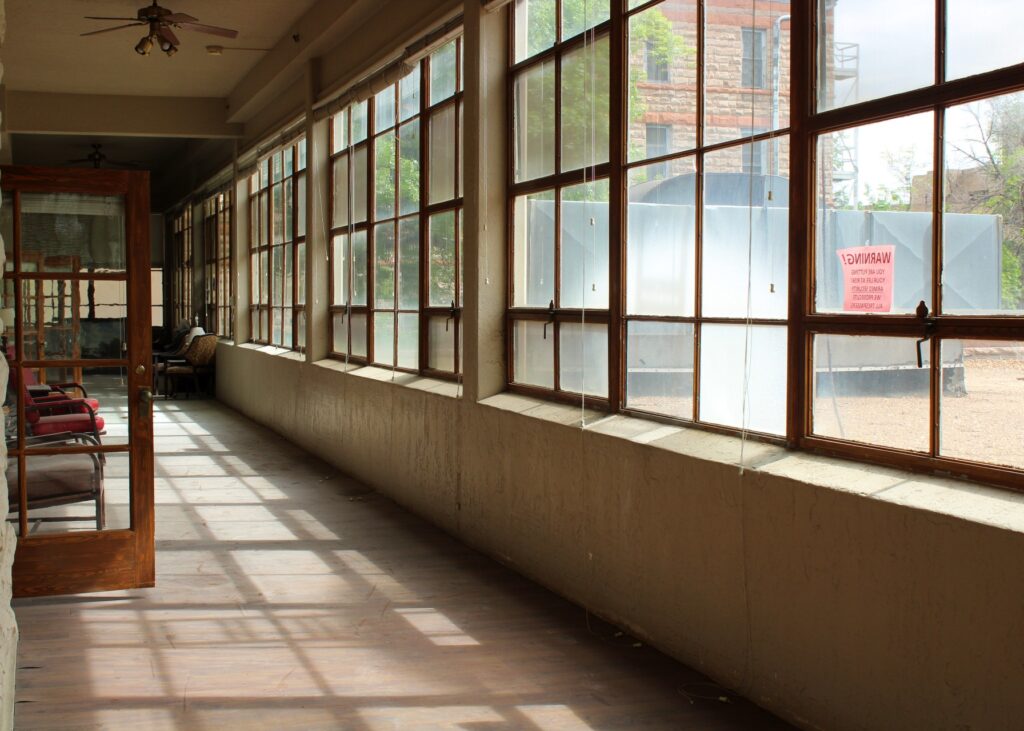
Hinkle said it was a self-sustaining operation with a dairy farm and its own post office. The aforementioned birth certificate belonged to the facility's postal carrier, a job he held for 30 years, prior to the facility's closure.
"It started to decline obviously when the printing business declined, as computers became more popular and was later sold to a nursing home organization and they owned it until 2020," she said.
Hinkle said the feedback from the public about the purchase of the property has been overwhelmingly positive, especially on social media.
"Everyone was like, oh my gosh, 'I'm so glad they're saving it and they're not tearing it down.' And so people are so excited that this is gonna be available to the public," she said, alluding to the complex's far-reaching history.
"There was a huge parade of 2000 people that marched up from downtown for the opening of this place," she said. "And so by adaptively reusing it, we're harkening back to a time when it was such an attraction and brought so many people from all over the world to come see it."
But along with that comes a historical responsibility.
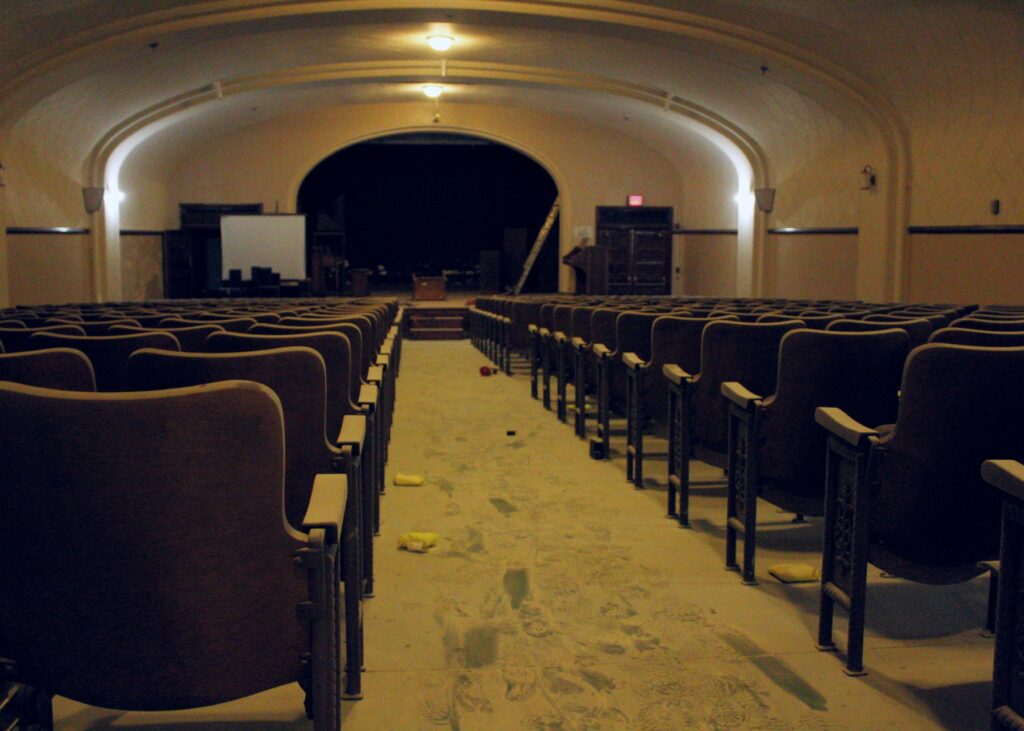
It's a place where many people died and suffered from lengthy illness. There's a section in Colorado Springs' Evergreen Cemetery with close to 2000 headstones, all for residents of the Union Printers Home.
In 2020, the on-site nursing home operated by Kansas-based Heart Living Centers shut down amid sub-par standards after a resident froze to death on a bench outside.
Investor Susan Pattee acknowledges the Union Printers Home could be seen as a sad place.
"We've been looking at that a lot," she said. "And honestly, I've been here with a lot of people a lot of times and I think the overarching feeling is comfort and peace."
That's something Pattee and her fellow investors hope to keep once the renovations are complete.
"We want to make sure that we capture all the positive parts," she said. "[We don't want to] bypass what did happen. We don't want to discount that. We'll honor people that worked and lived here."
Pattee says they're looking to Ivywild to set a baseline, referencing the adaptive reuse of the Ivywild School, which was shut down in 2009. That building still looks like a school from the outside, but on the inside, it's divided up into restaurants and shops. The final vision for the Union Printers Home is still to be determined.
She says all of the infrastructure on the property - think basic utilities like plumbing and modern conveniences like internet - will need to be either modified or added. The investment group recently chose a firm to help produce a master plan for the land and its four structures, a task that's neither easy nor cheap as the castle alone is 100,000 square feet.
An archival look at the Union Printers Home
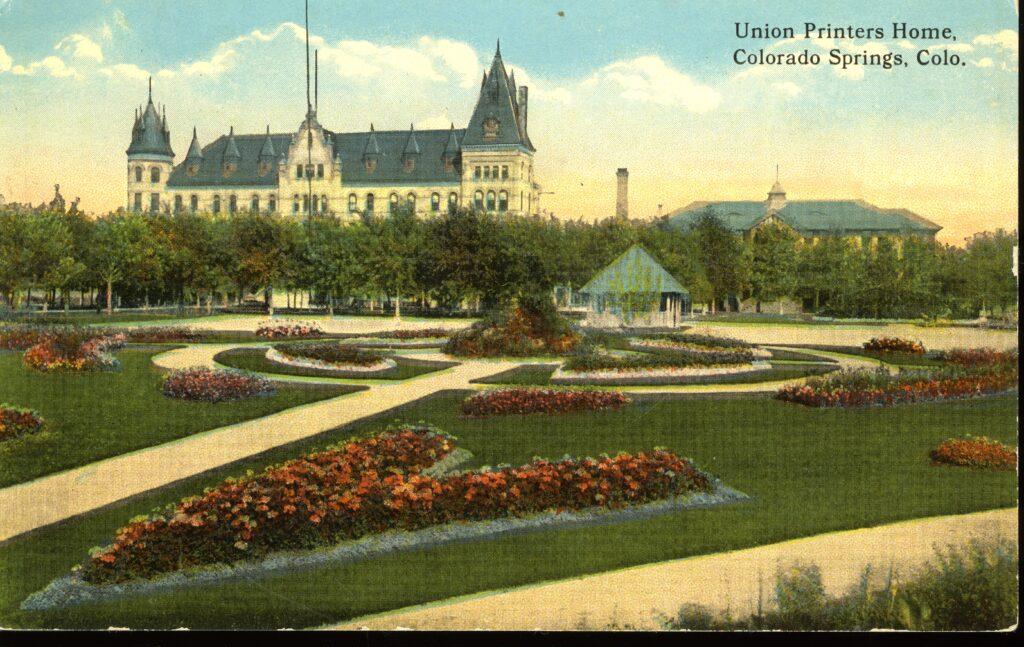
An 1910 illustration showing the Union Printers Home. 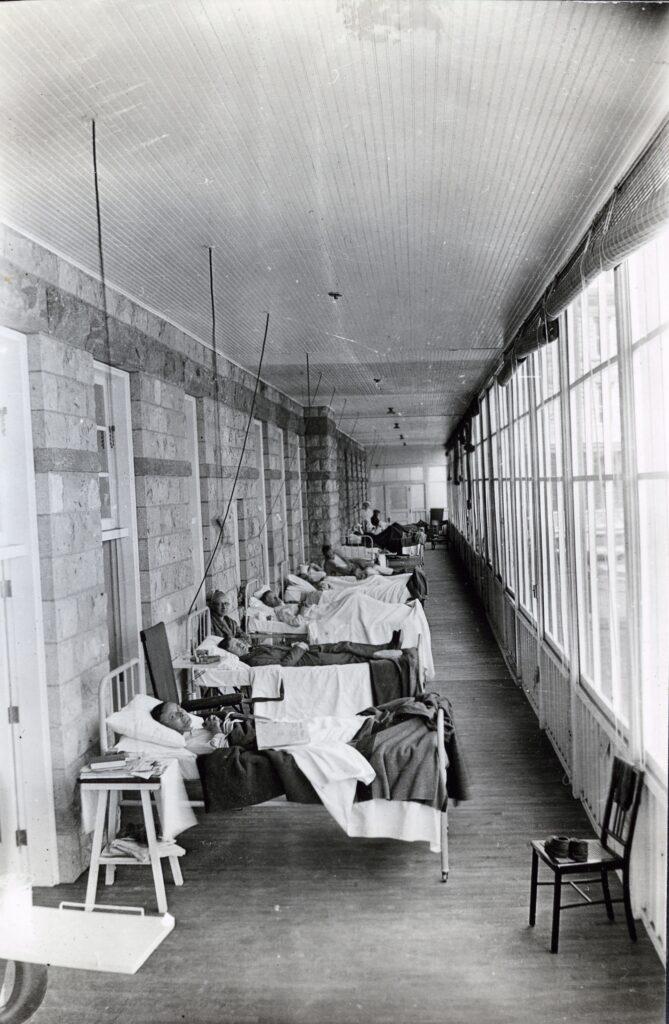
This archival photos shows the long sun porch at the Union Printers Home that was used for fresh air for residents who had tuberculosis. 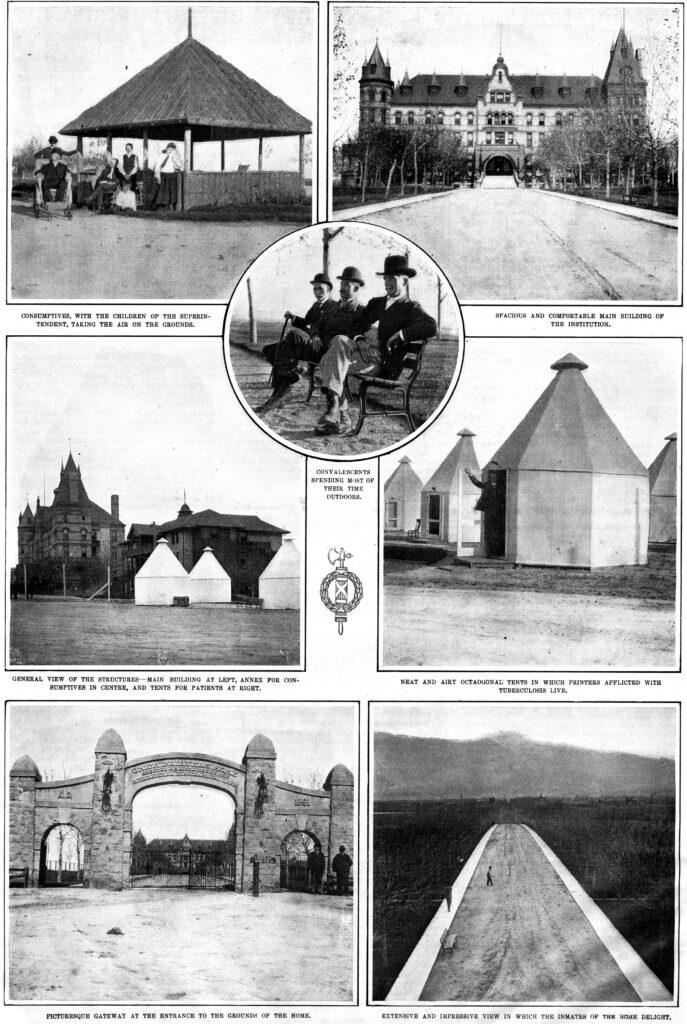
An advertisement for the Union Printers Home describing the site as "the International Typographical Union's fine institution at Colorado Springs, Col., where veterans of the trade and consumptives are cared for," circa 1906 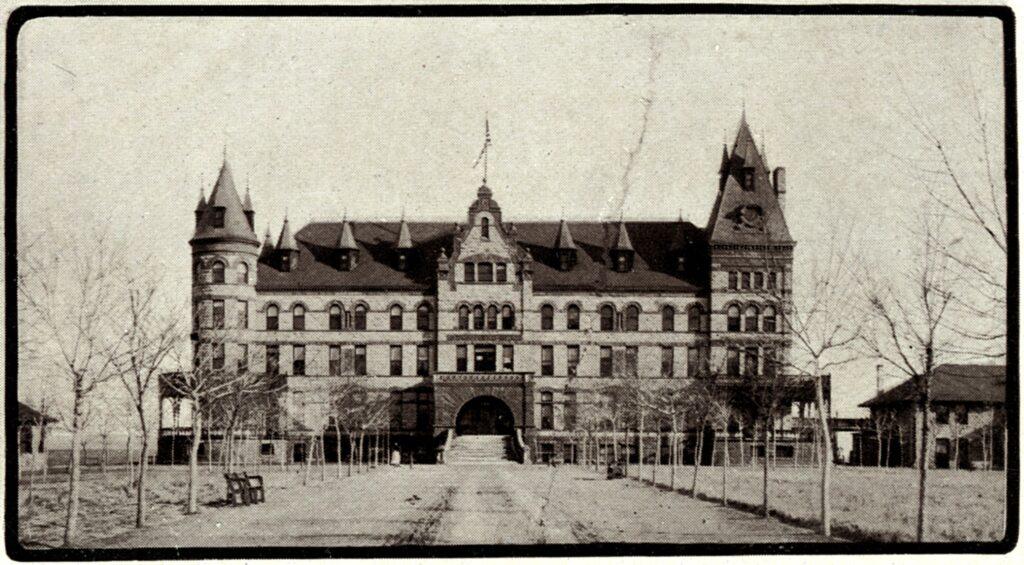
A postcard of the Union Printers Home from 1902
Altizer Day in the Life by CPR Digital on Scribd
Editor's note: This text has been updated to clarify the link between carbon-based printer's ink and black lung disease, as well as tuberculosis. The audio has not been updated.

